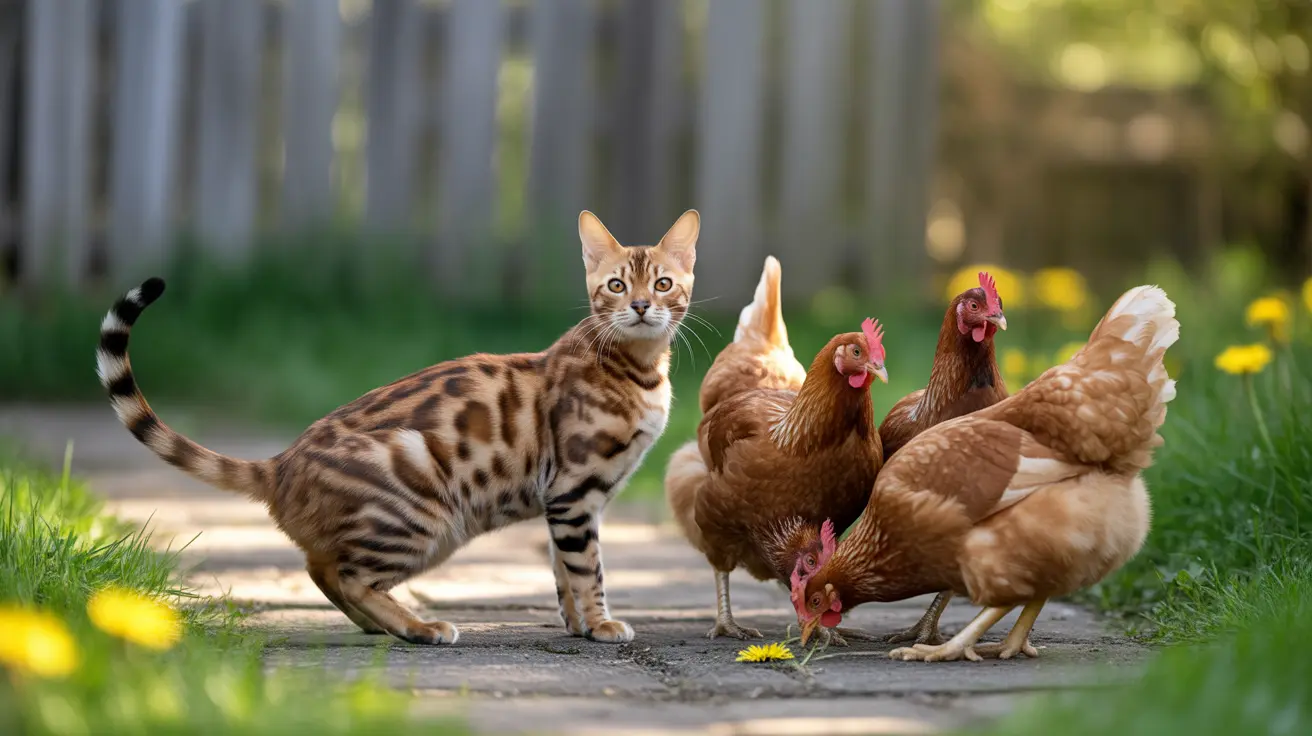The Truth About Cats as Chicken Protectors
Contrary to what some might hope, cats are not natural guardians of chickens. While there are occasional heartwarming stories of cats showing protective behavior toward chickens, these cases are exceptional rather than the norm. Cats are primarily solitary hunters by nature, and their territorial instincts may inadvertently benefit chickens by deterring other predators.
However, this deterrent effect is usually incidental rather than intentional protection. Cats mark their territory and may chase away other cats or small predators, which can indirectly benefit the chicken flock.
Natural Instincts and Predatory Behavior
It's essential to understand that cats are natural predators with strong hunting instincts. Adult chickens are usually too large for domestic cats to consider as prey, but chicks and young pullets can be at serious risk. Even well-fed house cats may chase or play with smaller birds, potentially causing injury or death.
The predatory drive varies significantly among individual cats, influenced by factors such as:
- Early socialization experiences
- Individual temperament
- Hunger levels
- Previous exposure to birds
Creating Safe Coexistence
While cats may not actively protect chickens, many households successfully maintain both pets with proper management. Here are key strategies for fostering safe coexistence:
Proper Introduction Techniques
- Start with physical barriers between cats and chickens
- Allow visual contact through secure fencing
- Supervise all initial interactions
- Reward calm, non-aggressive behavior
Environmental Management
- Provide secure, predator-proof housing for chickens
- Ensure separate feeding areas
- Maintain clean living spaces
- Create escape routes and hiding spots for both species
Monitoring and Maintaining Safety
Successful integration requires ongoing vigilance and management. Watch for signs of stress or aggression in both cats and chickens, and be prepared to separate them if necessary. Pay special attention during vulnerable periods, such as when new chicks arrive or during breeding season.
Benefits of Cat Presence Around Chicken Coops
While cats may not actively guard chickens, their presence can offer several advantages:
- Rodent control around chicken feed areas
- Deterrence of other wandering cats
- Reduction in small predator activity
- Additional companionship for both species in some cases
Frequently Asked Questions
Will my cat protect my chickens from predators?
While cats generally won't actively protect chickens, their presence may deter some predators due to territorial behavior. However, this shouldn't be relied upon as a primary protection strategy for your flock.
How can I safely introduce cats to chickens in my backyard?
Start with supervised interactions through secure fencing, gradually allowing closer contact while monitoring both animals' behavior. Always maintain escape routes for both species and never force interactions.
Are cats a danger to baby chicks, and how can I keep them safe?
Yes, cats can pose a significant risk to baby chicks. Keep chicks in secure, enclosed spaces until they're fully grown, and never allow unsupervised contact between cats and young birds.
Can cats and adult chickens peacefully coexist in the same area?
Yes, with proper introduction and management, many cats and adult chickens can safely share space. Success depends on individual temperaments and consistent supervision.
What are the benefits and risks of having cats around my chicken coop?
Benefits include rodent control and possible deterrence of other predators. Risks include potential harm to young birds, stress for both species, and possible disease transmission. Careful management is essential to maximize benefits while minimizing risks.
Conclusion
While cats won't typically serve as dedicated chicken protectors, they can coexist peacefully with proper management and supervision. Focus on creating safe spaces for both species, maintaining vigilant oversight, and understanding that any protective benefits are likely to be indirect rather than intentional.






